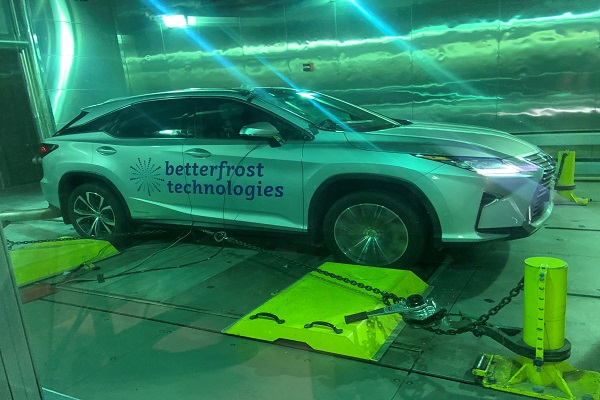Low Energy Surface Heating in EVs to Defog and Defrost
Thursday, May 18
12:00 - 1:00 p.m. ET
(Complimentary Virtual Event)
Join us for a discussion on new methods for low-energy surface heating available in electric vehicles for passenger cars and commercial vehicles. These approaches use only the minimal amount of heat necessary to keep the surface clear of moisture - ice or fog. This saves energy in cold weather and becomes more effective, the colder it gets versus current methods.
EVs are very sensitive to cold temperatures. AAA, GeoTab, and Recurrent have good field data on EV performance as it gets colder and EV range can shrink by up to 50% at -20C (-4F). This is a major performance problem for EVs. Historically, when heating is required to defrost or defog a vehicle surface, the common approaches use high energy methods. When an internal combustion engine (ICE) provides free waste-heat, this wasn't a problem. However, with EVs, this free source of waste heat isn't available, but the methods for defrost and defog are largely carry over designs from ICE engines.
This presentation will discuss:
- Identifying the minimal amount required and controlled heat so that it is not wasted into the environment
- New transparent conductive materials that enable glass and plastic to create heat at the surface where it is needed,
i.e., eliminate heat transfers
- Lab results that show energy reductions of 50% to 95% compared to current methods
- Applications to the windshield, side glass, ADAS surfaces, and Outside Heat Exchangers (OHX)
- Benefits to drivers and car designers
Moderator
Dwayne Taylor, R&D Engineer, DENSO International America, Inc.
Presenter
Derrick Redding, CEO, Betterfrost Technologies
Important Note: You must register in advance to receive a personalized link.
For more information, email Stephanie Alexander or call (248) 324-4445 ext. 3.
Register
Low Energy Surface Heating in EVs to Defog and Defrost
Thursday, May 18
12:00 - 1:00 p.m. ET
(Complimentary Virtual Event)
Join us for a discussion on new methods for low-energy surface heating available in electric vehicles for passenger cars and commercial vehicles. These approaches use only the minimal amount of heat necessary to keep the surface clear of moisture - ice or fog. This saves energy in cold weather and becomes more effective, the colder it gets versus current methods.
EVs are very sensitive to cold temperatures. AAA, GeoTab, and Recurrent have good field data on EV performance as it gets colder and EV range can shrink by up to 50% at -20C (-4F). This is a major performance problem for EVs. Historically, when heating is required to defrost or defog a vehicle surface, the common approaches use high energy methods. When an internal combustion engine (ICE) provides free waste-heat, this wasn't a problem. However, with EVs, this free source of waste heat isn't available, but the methods for defrost and defog are largely carry over designs from ICE engines.
This presentation will discuss:
- Identifying the minimal amount required and controlled heat so that it is not wasted into the environment
- New transparent conductive materials that enable glass and plastic to create heat at the surface where it is needed,
i.e., eliminate heat transfers
- Lab results that show energy reductions of 50% to 95% compared to current methods
- Applications to the windshield, side glass, ADAS surfaces, and Outside Heat Exchangers (OHX)
- Benefits to drivers and car designers
Moderator
Dwayne Taylor, R&D Engineer, DENSO International America, Inc.
Presenter
Derrick Redding, CEO, Betterfrost Technologies
Important Note: You must register in advance to receive a personalized link.
For more information, email Stephanie Alexander or call (248) 324-4445 ext. 3.
[roundbutton text= "Register" link= "https://us02web.zoom.us/meeting/register/tZApdeGhpzkjG9O6uKVqMkT8_9EOXx1nKoCJ"]

May
18
Virtual Event


